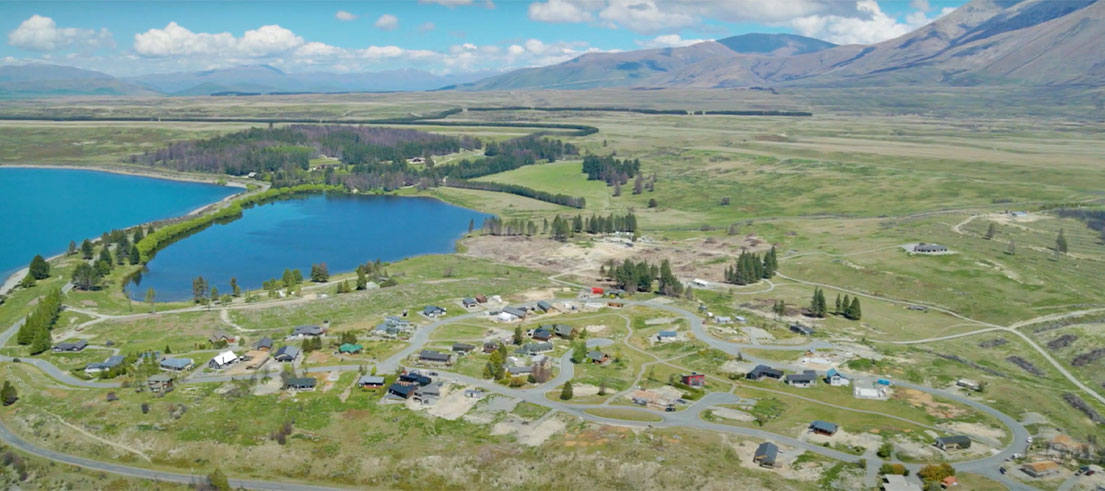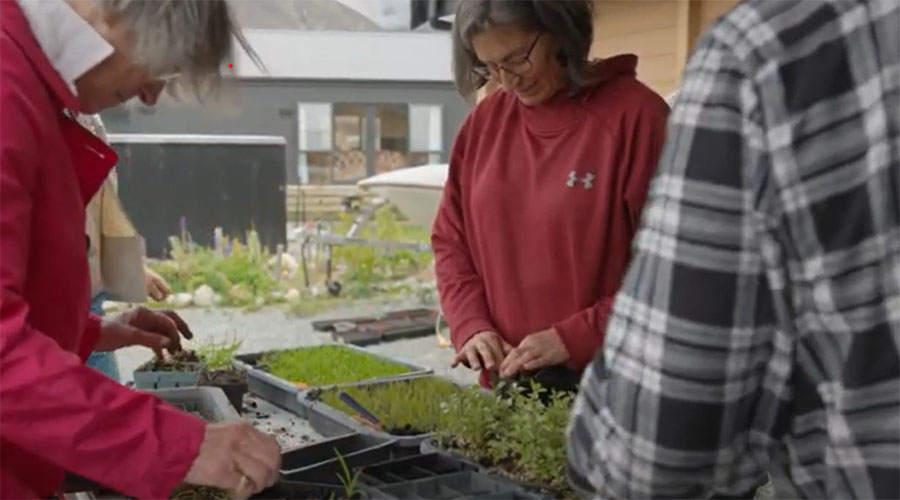
Native plantings to regenerate Lake Ōhau village
Native seedlings are thriving in pots and planters around Lake Ōhau village thanks to new skills learnt by residents who attended a propagation workshop earlier this year.
The seedlings have been growing steadily over winter and will be replanted throughout the village and its surrounds, as the village regenerates and the community recovers from a devastating wildfire on 4 October 2020.
Lake Ōhau fire clean up
The wildfire event, one of the worst in the history of Aotearoa, burnt through more than 5500 hectares of land, destroying 44 homes fortunately with no loss of life.
The Lake Ōhau community has achieved a lot in the past two years — 22 of the homes destroyed in the wildfire have either been rebuilt or are in the process of being rebuilt, and there are 11 new residences too.
It’s been a time of recovery for residents of the tightknit community, and recovery looks different for every person according to community member and chair of the Ōhau Conservation Trust, Viv Smith-Campbell.
"Personal, social and community recovery is the most important — being able to work through this with others in the community who understand as they are going through it too is also very important. There’s also joy for property owners as houses are rebuilt and occupied again, and for the community, as they see this progress being made."
Propagation workshops
The workshop was organised by Wilding Free Mackenzie with funding from the Wilding Pine Network, and support from Environment Canterbury.
Attendees learnt how to propagate plants from locally sourced seeds and use these to replant fire-damaged areas in and around the village.
Restoring biodiversity and removing wilding conifers
The propagation work will boost biodiversity and reduce future fire risks from wilding conifers, which are pine trees that have self-seeded and are growing where they are not supposed to be. They can take over productive farmland, compete with native plants for sunlight, use up precious water resources and increase the intensity and hazard of fires. The cost to the country of fire prevention alone could reach $654m over 50 years if nothing was being done to prevent the spread. This risk is increasing with a warming climate.
The National Wilding Conifer Control Programme, which began in 2016, is a collaborative effort to remove these pesky trees. It is led by Biosecurity New Zealand, in partnership with the Department of Conservation, Land Information New Zealand, and the New Zealand Defence Force, and delivered locally through regional councils including Environment Canterbury, rūnanga, and community trusts.
Since 2016, the National Wilding Conifer Control Programme has controlled the spread in more than 70% of the known infestation area, and more work is needed to prevent further spread.

